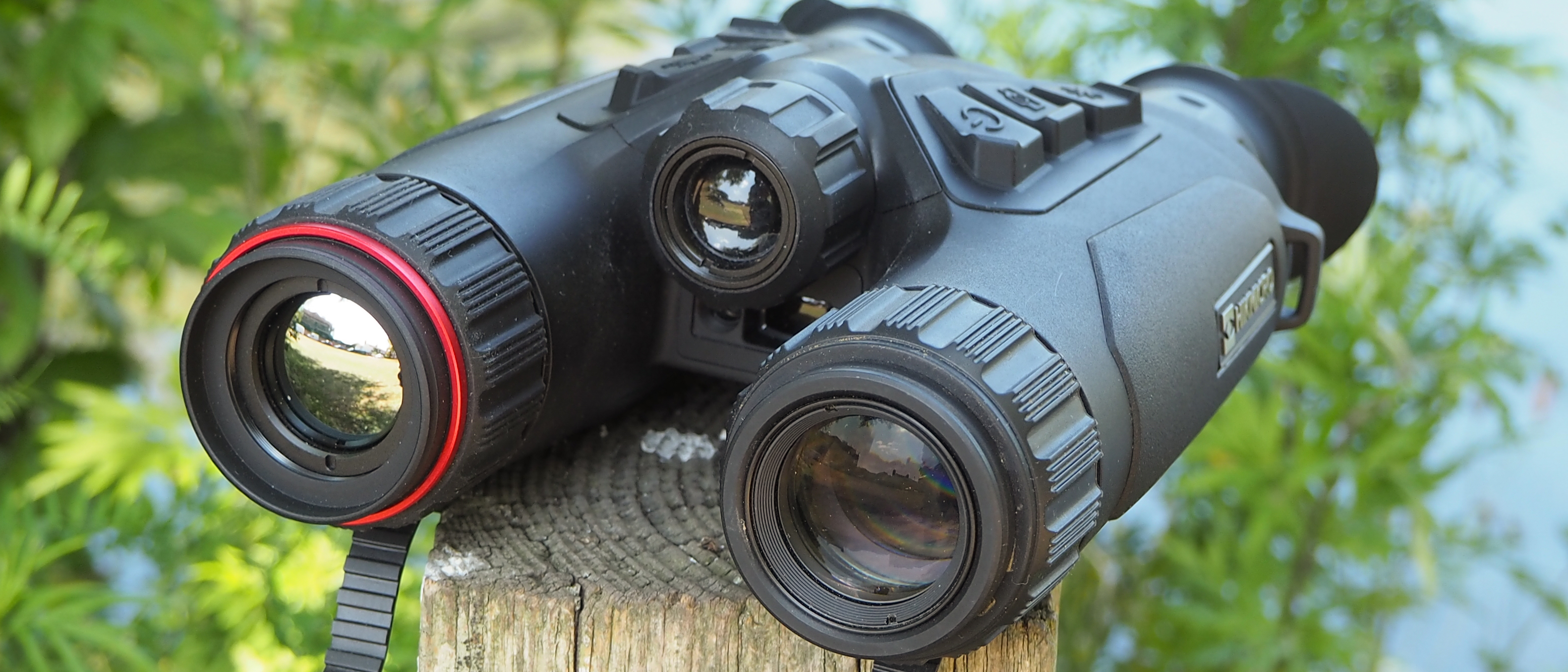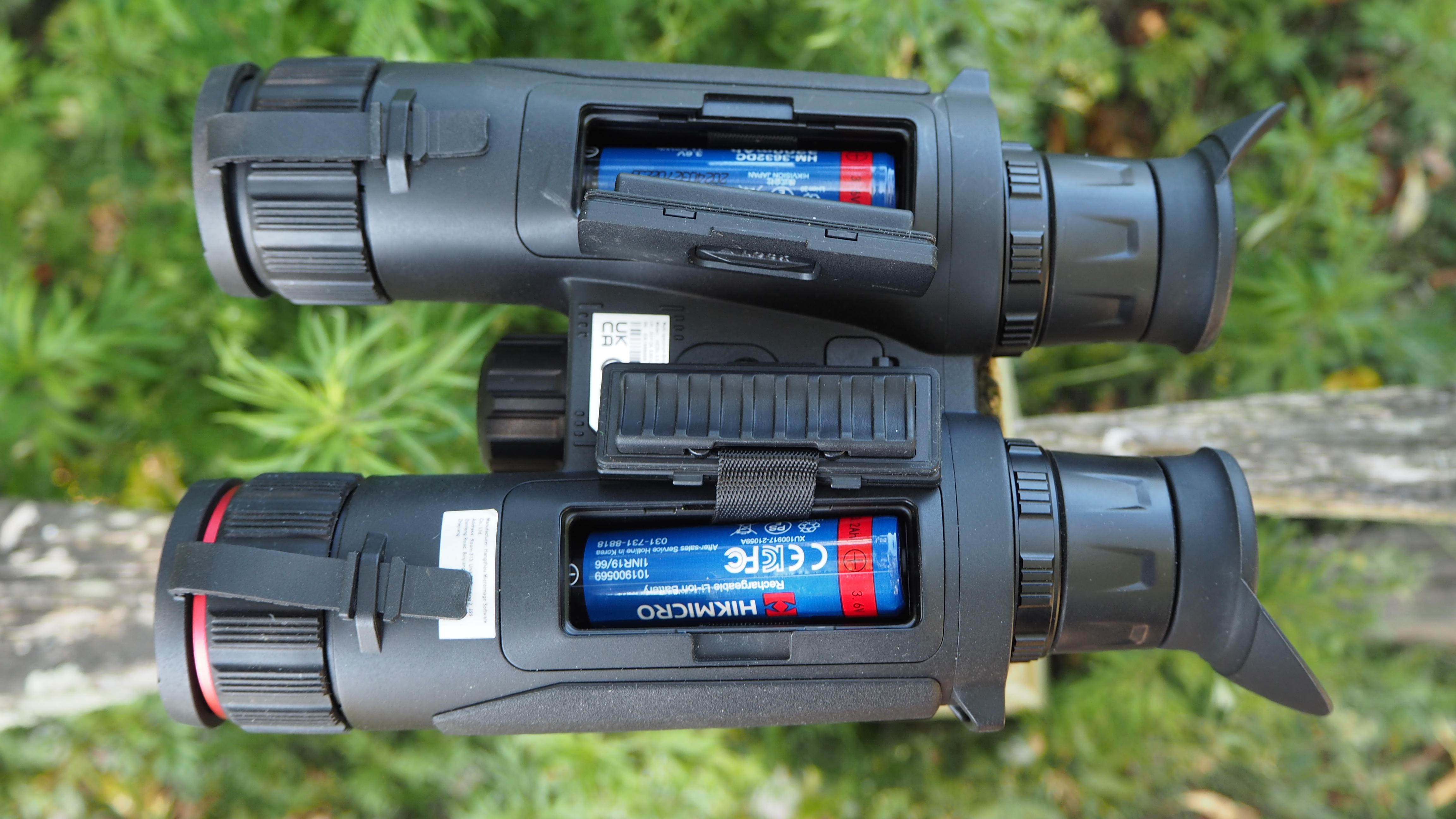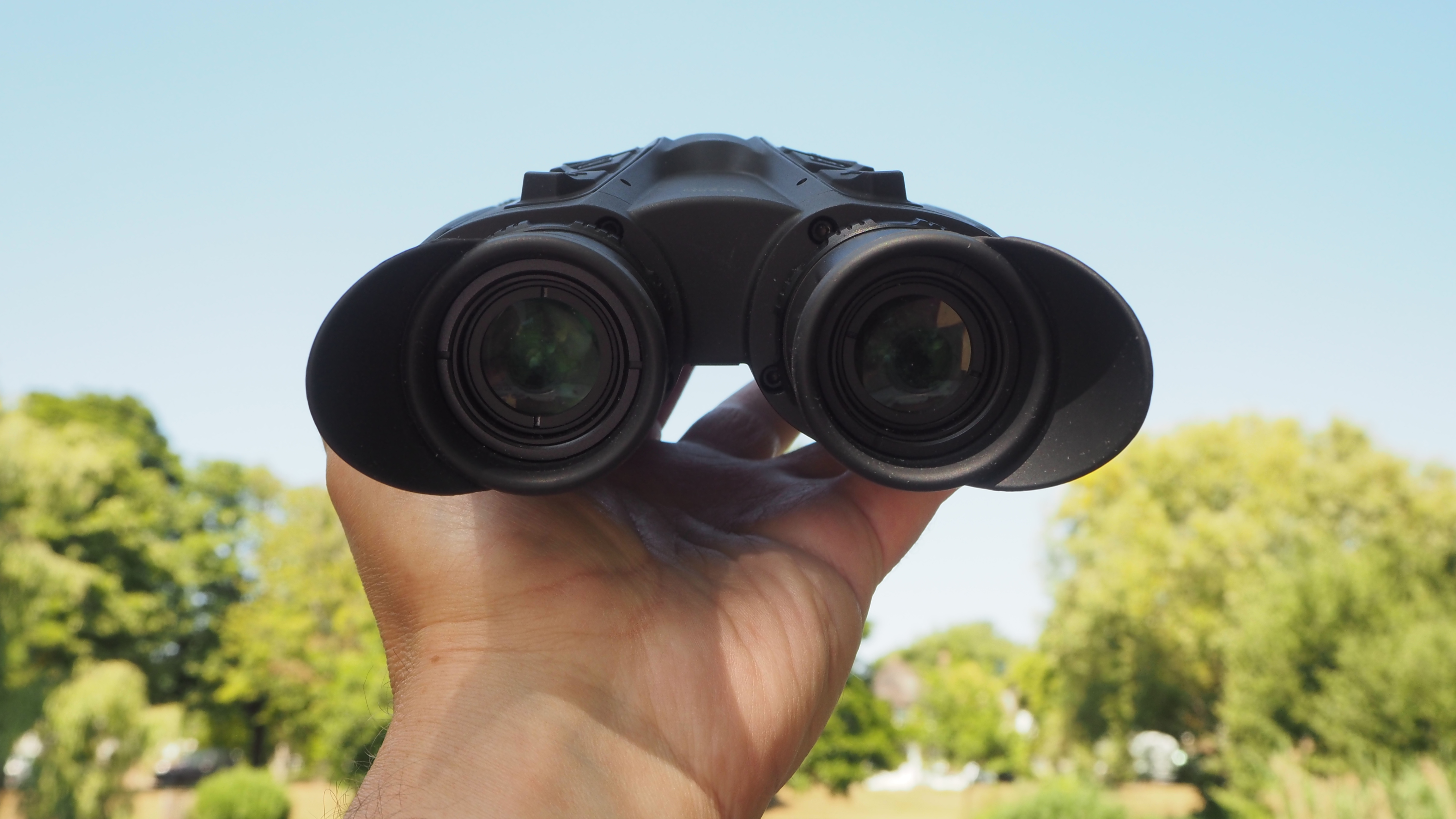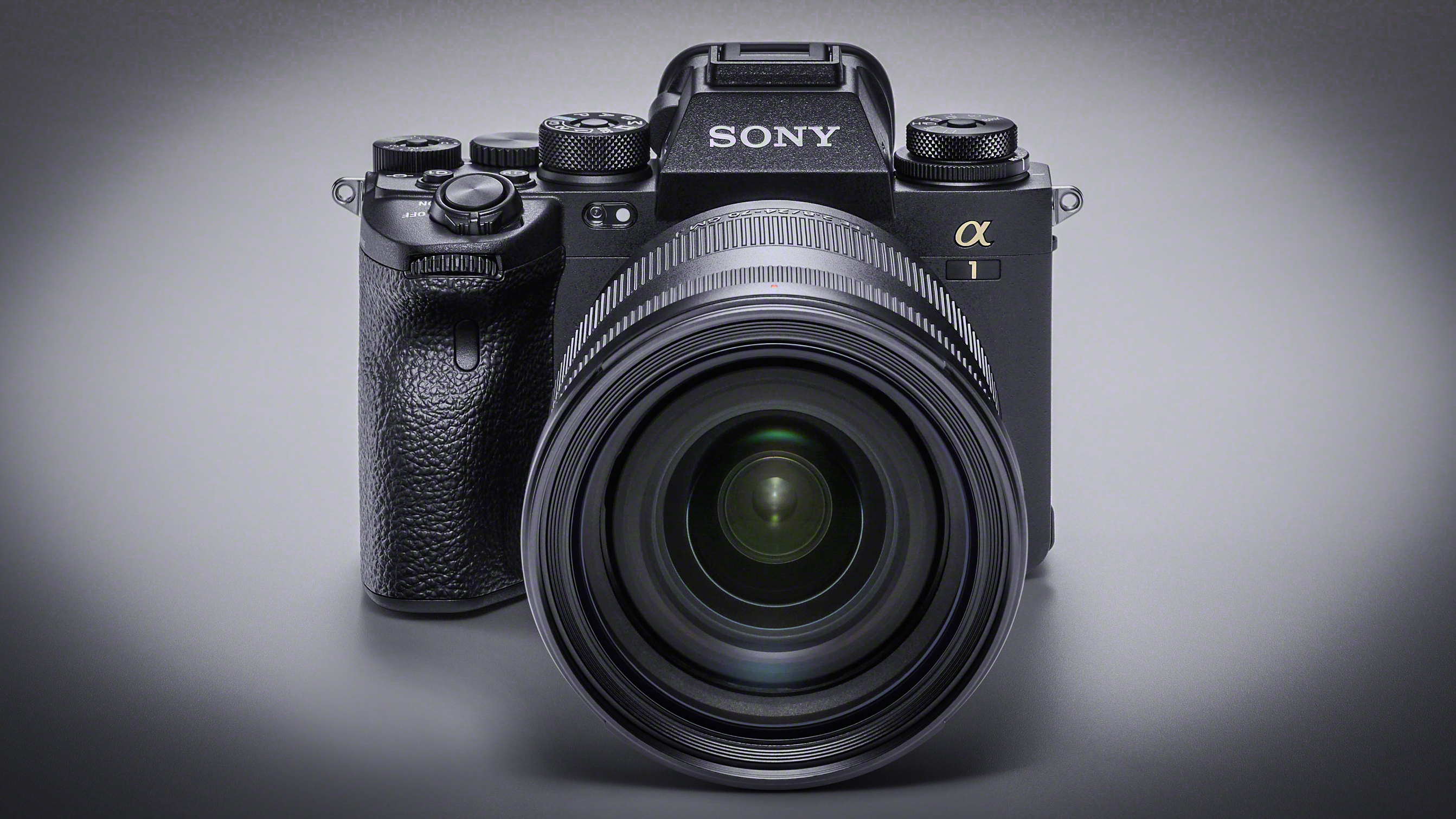Digital Camera World Verdict
Given it offers daytime, nighttime, and peek-between-undergrowth thermal imaging enhanced observation, the jack-of-all-trades HikMicro Habrok 4K HE25L feels competitively priced, even when compared to other models in its manufacturer’s range. Yes, the device is bulkier than your standard analogue bino, not least because of the chunky batteries required for up to eight hours of use, but its weight isn’t prohibitive. Being picky, I’d have liked clearer, brighter viewing even for daytime use, while the multi-function setup isn’t that intuitive initially. Get more acquainted, however, push against any limitations, and there’s a lot of fun to be had, especially at night. After all, picking out subjects otherwise near invisible to the naked eye feels like a superpower.
Pros
- +
Three-in-one daytime, nighttime and thermal imaging binocular plus camera combined
- +
Fairly priced given its all-encompassing feature set
- +
Ability to capture stills and videos of whatever’s under observation at the press of a button
Cons
- -
Chunkier / weightier than a standard analogue binocular
- -
Can’t be used like a regular bino if there’s no power
- -
Requires period of familiarisation to master controls and menu options
Why you can trust Digital Camera World
Even the performance of the best binoculars out there suffers incrementally as light levels fall. One way around this is to go for an infra-red night vision or thermal imaging-equipped binocular, allowing me to magically keep track of subjects, particularly skittish wildlife, when it’s almost pitch black out.
Because of the need for an internal power source and digital architecture, night vision binoculars tend to be bulkier than a regular daytime pair. That’s the case with the HikMicro Habrok 4K HE25L, which also has its near doppelganger in the US as the AGM ObservIR LRF 25-256.
However, anything lost regarding portability is repaid by the fact that I’m getting a regular daylight binocular, a night vision binocular, and a thermal imaging binocular combined. Its maker sums this up as a ‘multi-spectrum binocular’.
What’s more, though outwardly the HikMicro Habrok 4K HE25L nods to the look of a traditional binocular, it features an optical camera in one lens and a thermal camera in the other, each with its own focus ring at the front. Excitingly, this gives me the ability to record still images of whatever I’m observing – again, day or night – plus, via the same button, alternatively capture video clips with audio.
So, for those who really do need to maintain the ability to observe whatever hour it is, is the added bulk, weight and expense over a standard bino worth it? Read on to find out more about the HikMicro Habrok 4K HE25L.
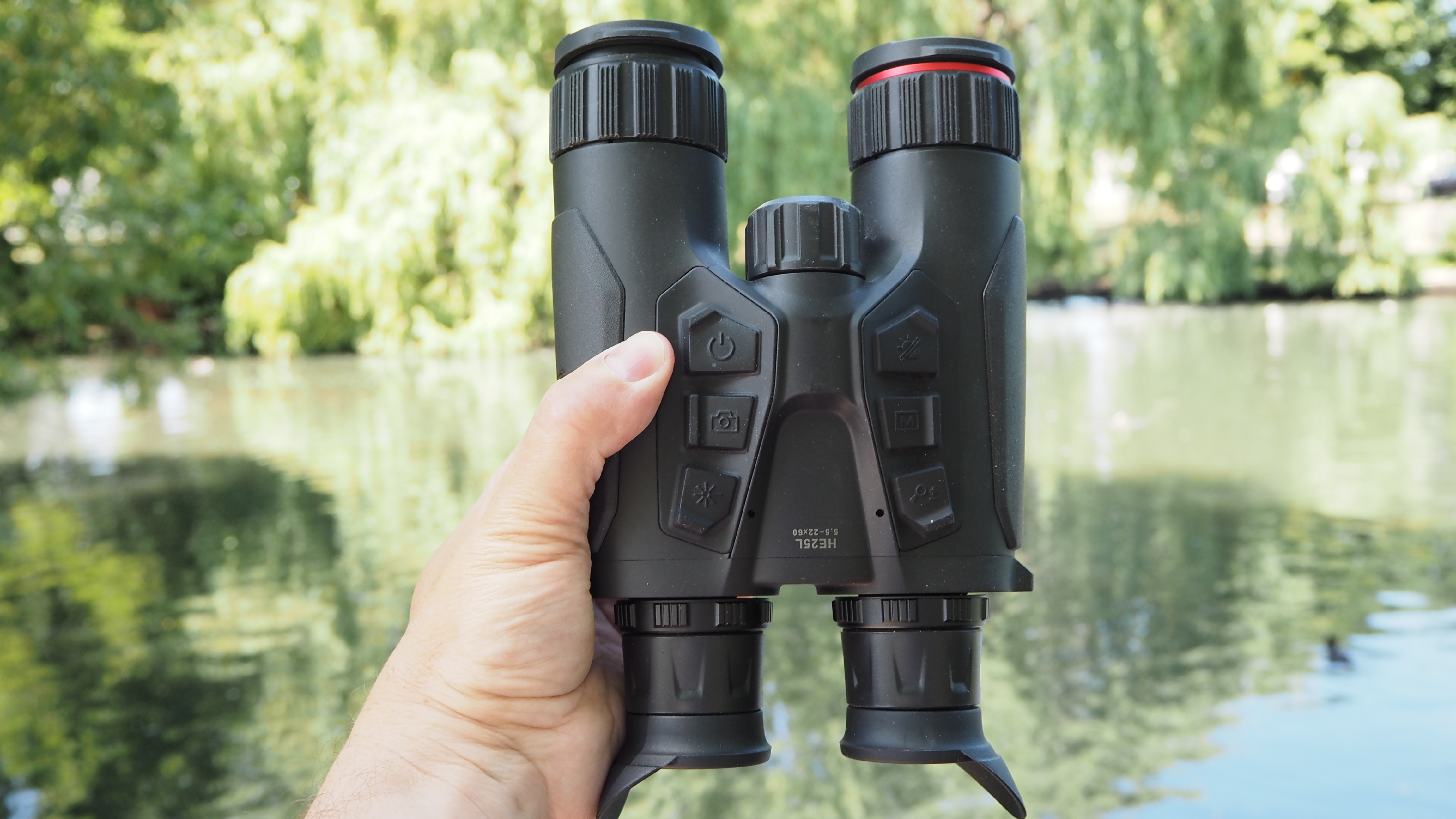
HikMicro Habrok 4K HE25L: Specifications
Magnification | 5.5-22x (optical module), 4.3x to 17.2x (thermal module) |
Lens | 60mm f/2.2 (optical), 25mm f/1.0 (thermal). Field of view at 100m: 12m |
Dimensions | 138x68.2x223mm, 5.4x2.7x8.6-inches |
Power | Dual batteries last 8 hours of continual use |
Weight | 795g without batteries |
HikMicro Habrok 4K HE25L: Price
The HikMicro Habrok 4K HE25L binocular has been available since spring 2024. For those seeking value for money, it appeals by virtue of not only being considerably cheaper than the premium likes of Swarovski and Leica, but also very competitively priced when it comes to models in its own maker’s lineup. For example, given that its HQ35L predecessor currently retails for much more, this budget-friendly alternative seems fair indeed. But while there are more expensive options around, there are far cheaper ones too, if you don’t need all the digital bells and whistles that this unit provides and want to prioritise clarity of observation over being able to identify and track animals via heat signatures and hotspots.
HikMicro Habrok 4K HE25L: Design & Handling
With six springy and chunky function buttons arranged in two rows, falling within reach of the fingers of both hands when the binocular is gripped, the HikMicro Habrok 4K HE25L’s build is the usual solid mix of magnesium alloy chassis with rubber detailing. These six top plate controls comprise the power button, capture button, a ‘measure’ button for the built-in rangefinder, a ‘mode’ button for switching between day, night, or auto mode, a self-explanatory menu button, plus a zoom button for increasing or decreasing magnification. A couple of these buttons serve dual functions in allowing me to tab between and select operational settings. However, they aren’t marked as such, meaning an initial period of familiarization is required. The quick start guide provided in the box wasn’t much help in this regard, so downloading a PDF of the full manual is a must.
The best camera deals, reviews, product advice, and unmissable photography news, direct to your inbox!
Feeling broad in the hands at a similar size and width to a hardback blockbuster novel, undoubtedly because of the need to accommodate all its digital architecture plus two rechargeable batteries, this device is especially suited to those with long Nosferatu-like fingers. Batteries are claimed to last eight hours of continuous operation; not a wow, but not egregious either. With an IP67 protection level, its manufacturer suggests it’s able to withstand ‘various’ weather conditions; good job, as I’d expect to be using it almost exclusively outdoors.
Batteries need five hours of charging before initial use. There’s the ability to juice up the batteries when they’re already housed within the device, via a flap on the underside hiding a USB port, but our review unit also helpfully came with a standalone mains charger. There’s space to load two batteries into the HikMicro Habrok 4K at a time, though the device will stay functional with just one. I liked that it helpfully comes with a generous four HM-3632DC batteries out of the box, with sufficient mains charger space for all four simultaneously if desired. A USB Type-C cable and soft carry pouch also come bundled.
Though the body of the HikMicro Habrok 4K HE25L doesn’t feature a central folding mechanism, I appreciated that its eyepieces can still be individually nudged closer or wider apart, adjusting interpupillary distance to best match my own eyes. Twisting the diopter rings of the same eyepieces also fine-tunes focus; useful if switching between operating with or without glasses.
Given the binos’ relative bulk and weight, for those intending extended periods of observation a screw thread for tripod attachment is helpfully provided dead centre of the base. Unlike some premium binoculars, there is no gyro sensor-powered mechanical image stabilisation to help avoid image judder at maximum magnification; however, weight and size meant I was able to hold them sufficiently steady as a viewing aid.
For those spending a lot of time in the great outdoors or who want to precisely measure the distance from their subject, a built-in compass and laser rangefinder capable of measuring up to 1000m are further accessible, the latter with a single button press.
Interestingly, what at first appears to be a camera lens sitting between the two front lenses of the binocular transpires to be the infrared light, with a window for its laser rangefinder just beneath. The right-side front lens, if viewing the unit from the back, is used for thermal imaging, while the left lens is used for optical imaging.
Without a central focus dial as we’d conventionally find on a standard binocular, initially, I was searching for what I should be using to sharpen the image visible through the eyepieces. In fact, each lens is encircled by a focus ring, as would be the case with a digital camera.
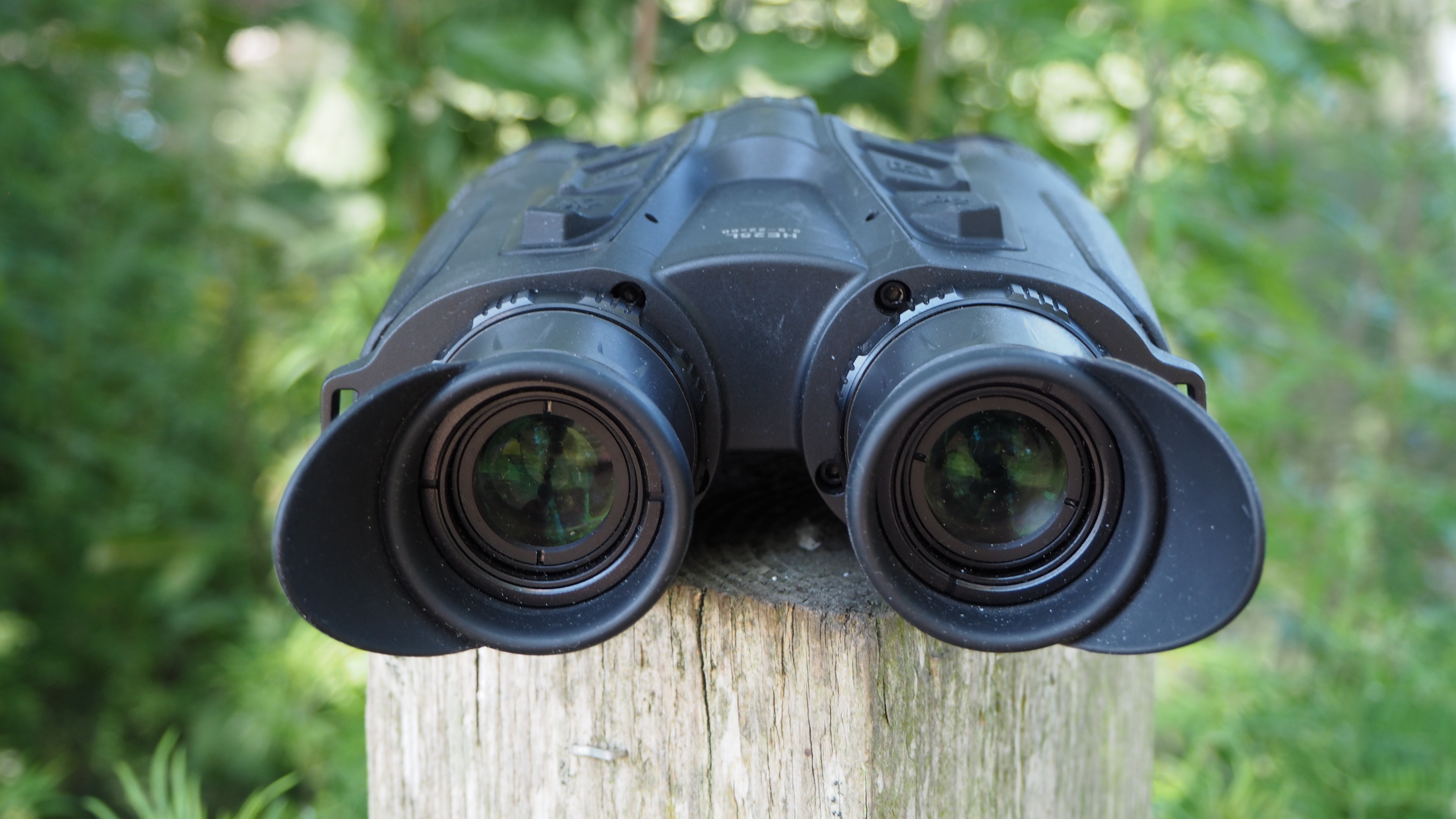
HikMicro Habrok 4K HE25L: Performance
Unlike a regular analogue binocular with a fixed magnification married to an objective lens, I found the HikMicro Habrok 4K HE25L further operates more like a digital camera in providing the ability to zoom between 5.5x magnification and 22x, its optical module offering a f/2.2 aperture lens with 60mm focal length, wedded to a 1/1.8-inch CMOS sensor.
Minimum working distance is eight metres, while working distance at night is 400m. By contrast, the adjacent thermal module has a detection range of 1200m and a minimum focusing distance of three metres, with 4.3x to 17.2x magnification. Either way, I was able to observe subjects at some distance, though the further away they were, the trickier it was to achieve critical focus, especially at night with a moving subject and when using these binoculars handheld.
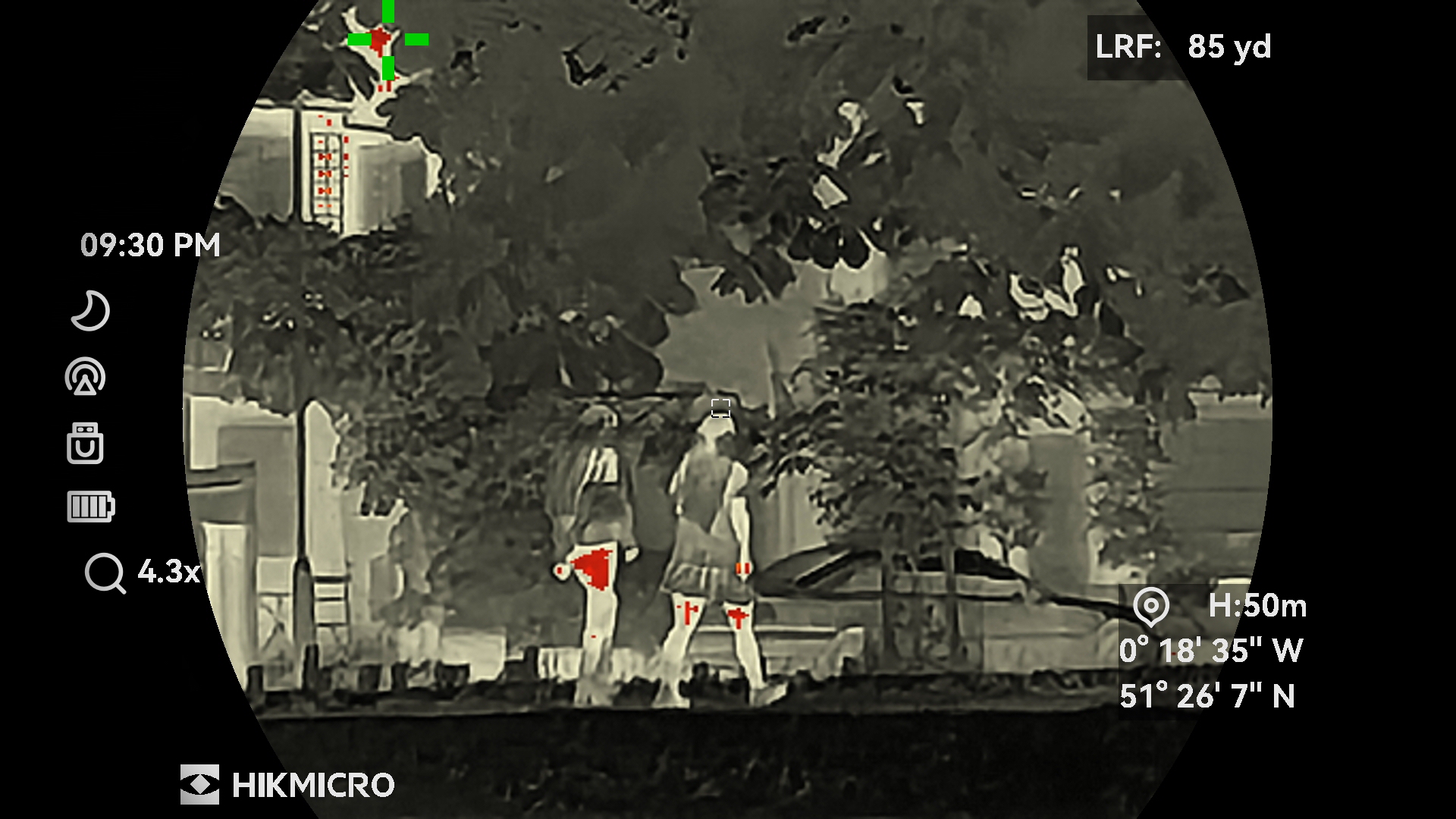
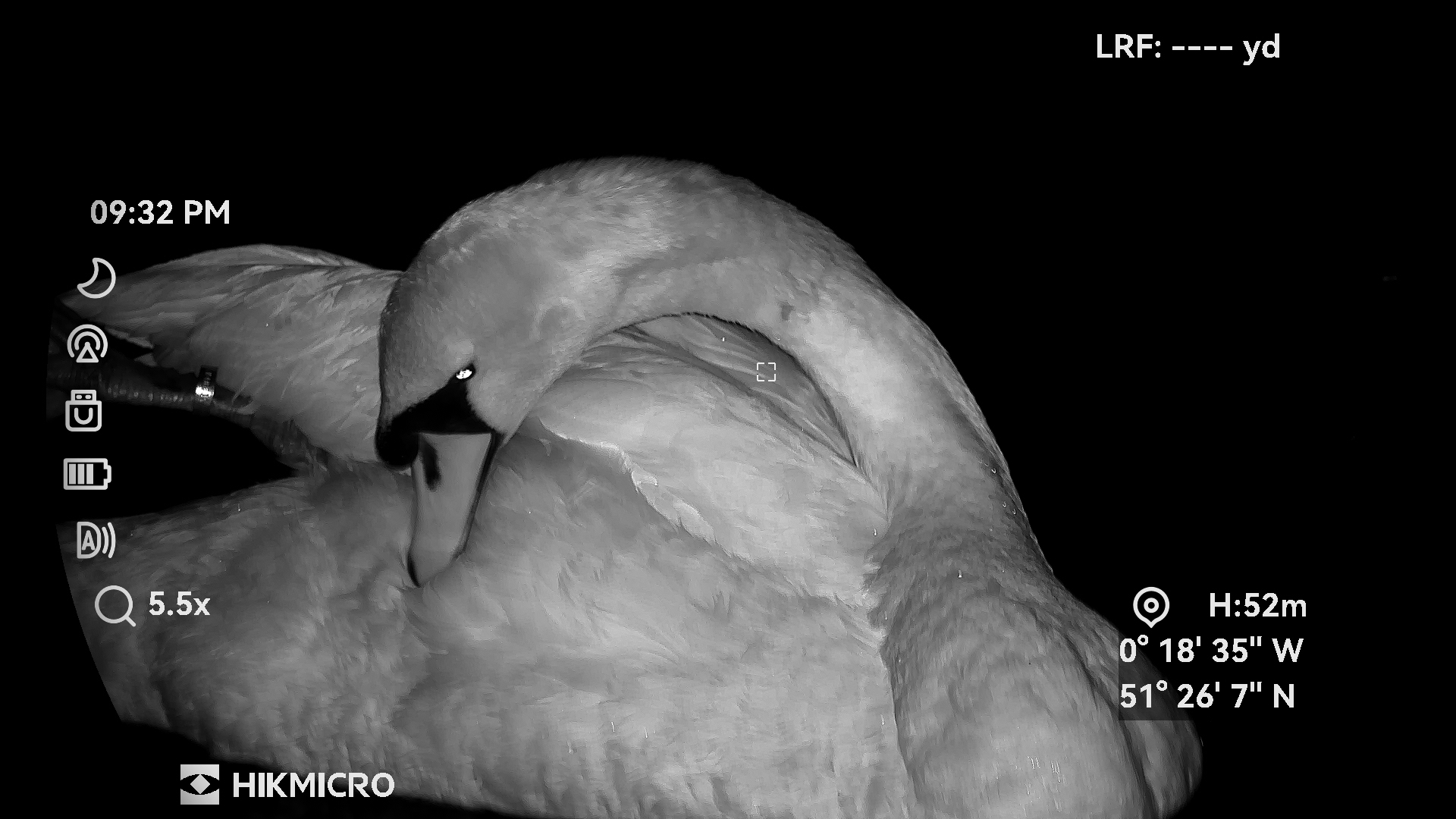
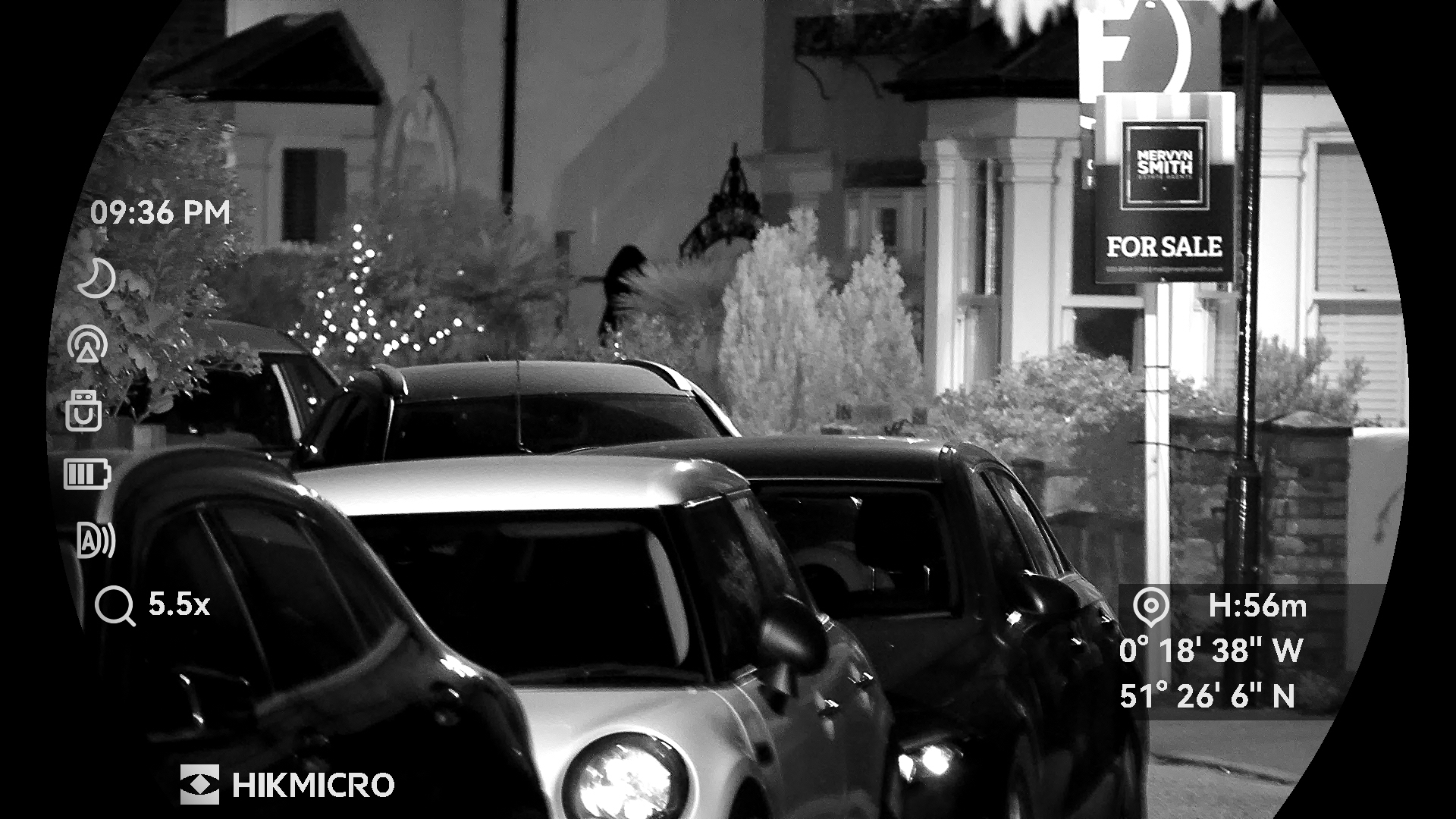
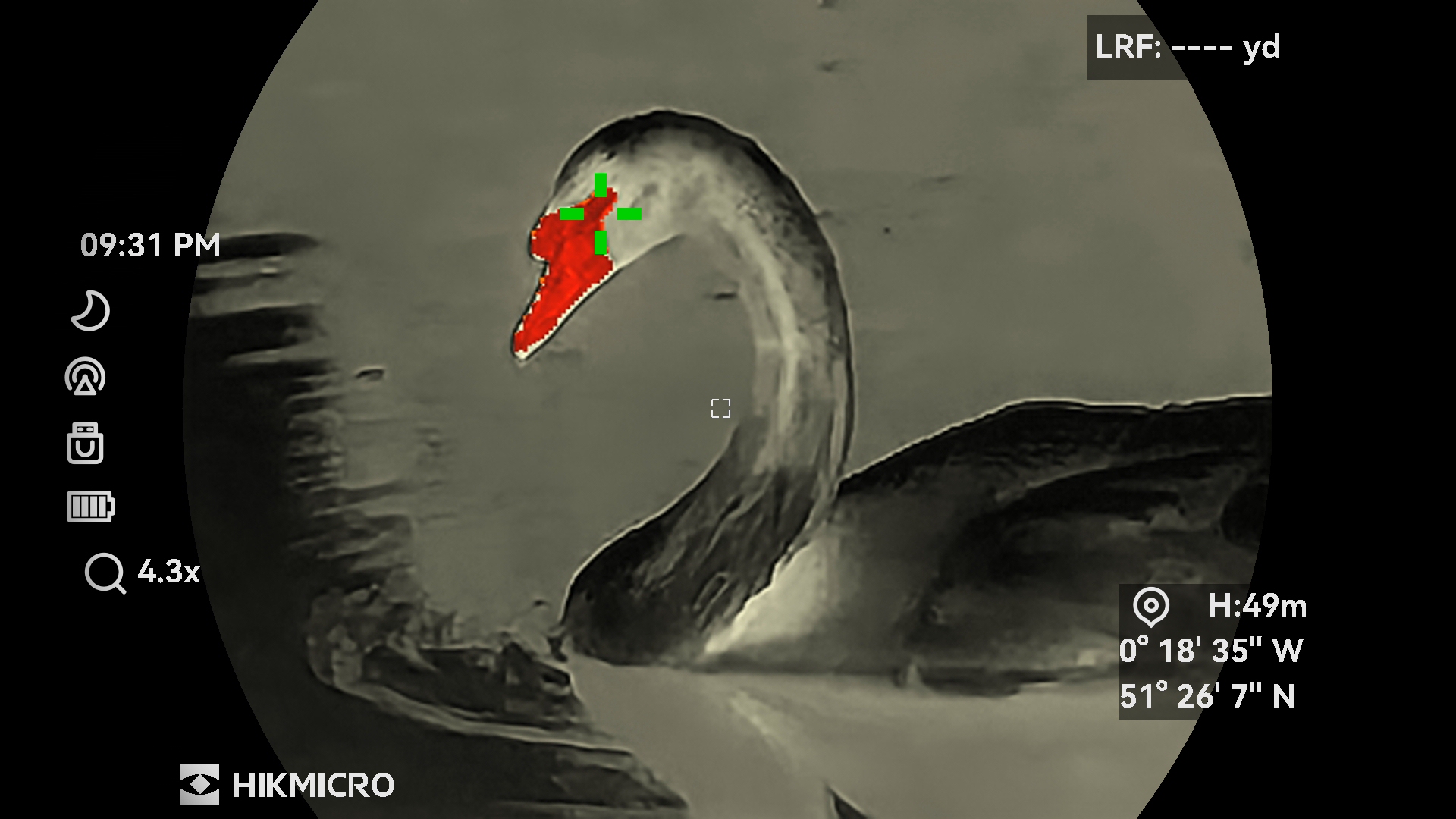

In a daylight setting, up to 4K resolution is offered via the optical module. Once we lose the light and switch to the thermal setting, resolution drops to a much more modest 256x192 pixels.
There is no removable memory card slot provided here, so any photos and videos with sound are stored directly on the device, with a generous 64GB of internal storage provided. Naturally, there’s also an optional app allowing smartphone syncing. Alternatively, when it comes to transferring images across to another device, I could simply connect one end of the USB cable to the binocular and the other to our PC to simply drag and drop whichever images I wanted from the on-board cache straight onto my desktop. The content of various date-stamped folders can be reviewed within the device via the eyepieces as a series of thumbnails, but obviously downloading and enlarging them provides greater clarity.
Like most of us, I’ve been guilty of leaving a lens cap in my bag or back pocket. Fortunately, there’s no danger of losing the rubber lens caps here, because they’re tethered. These simply hang beneath the lens when the binocular is in use. No caps are provided at the other side for the eyepieces, but I found the soft rubber eye cups do a good job of keeping dust off the glass as well as making for a comfortable viewing experience generally.
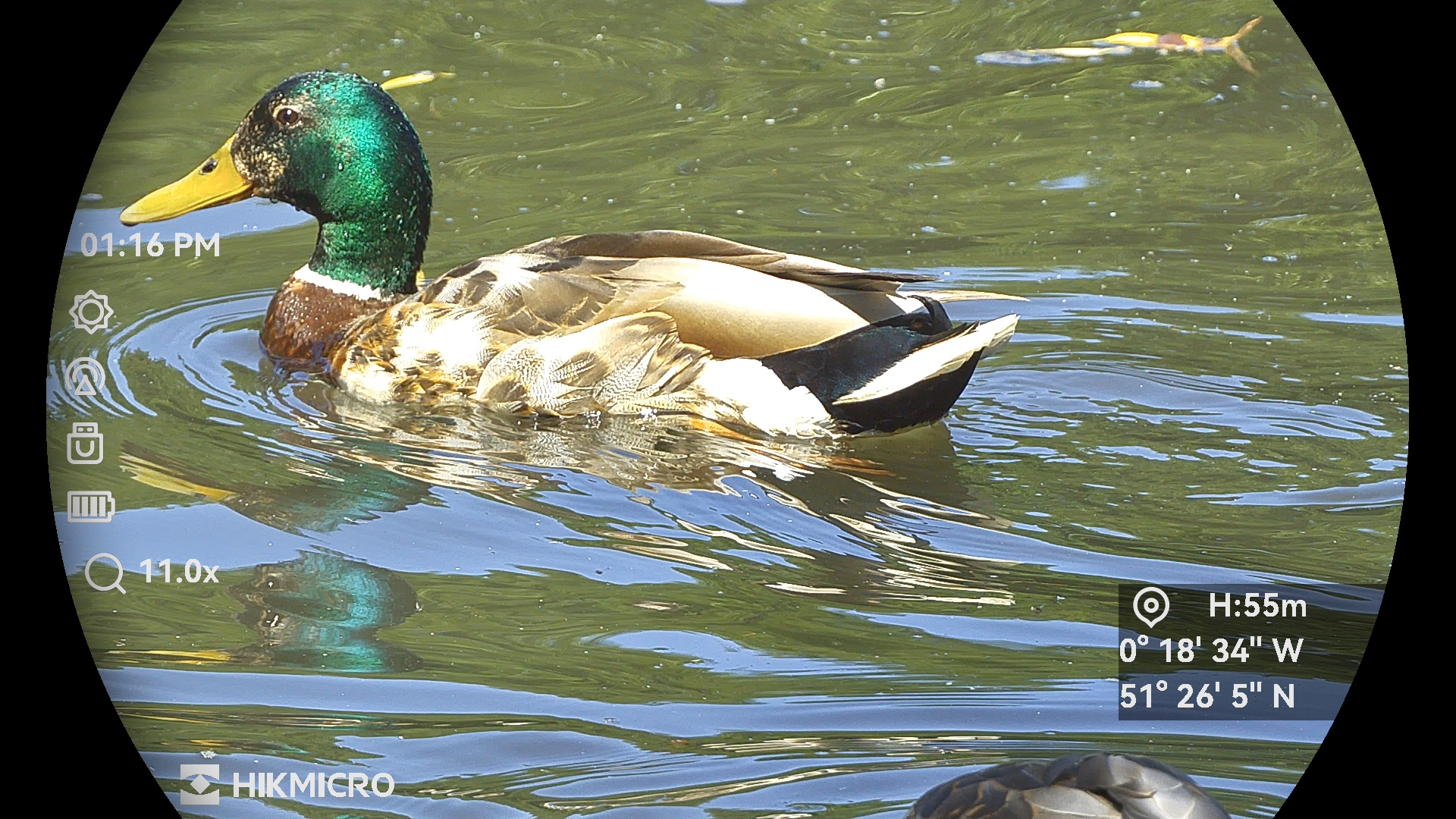
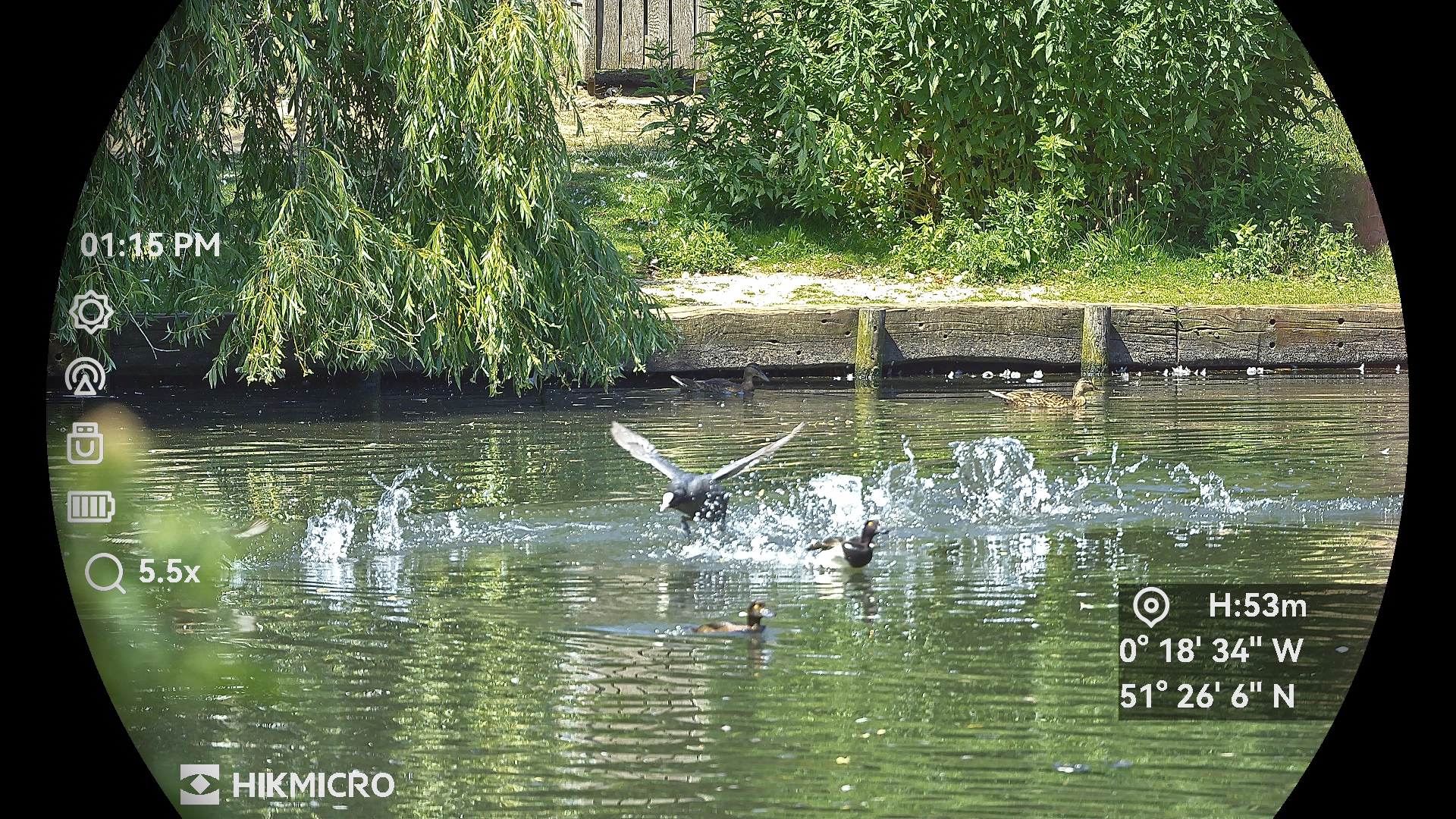
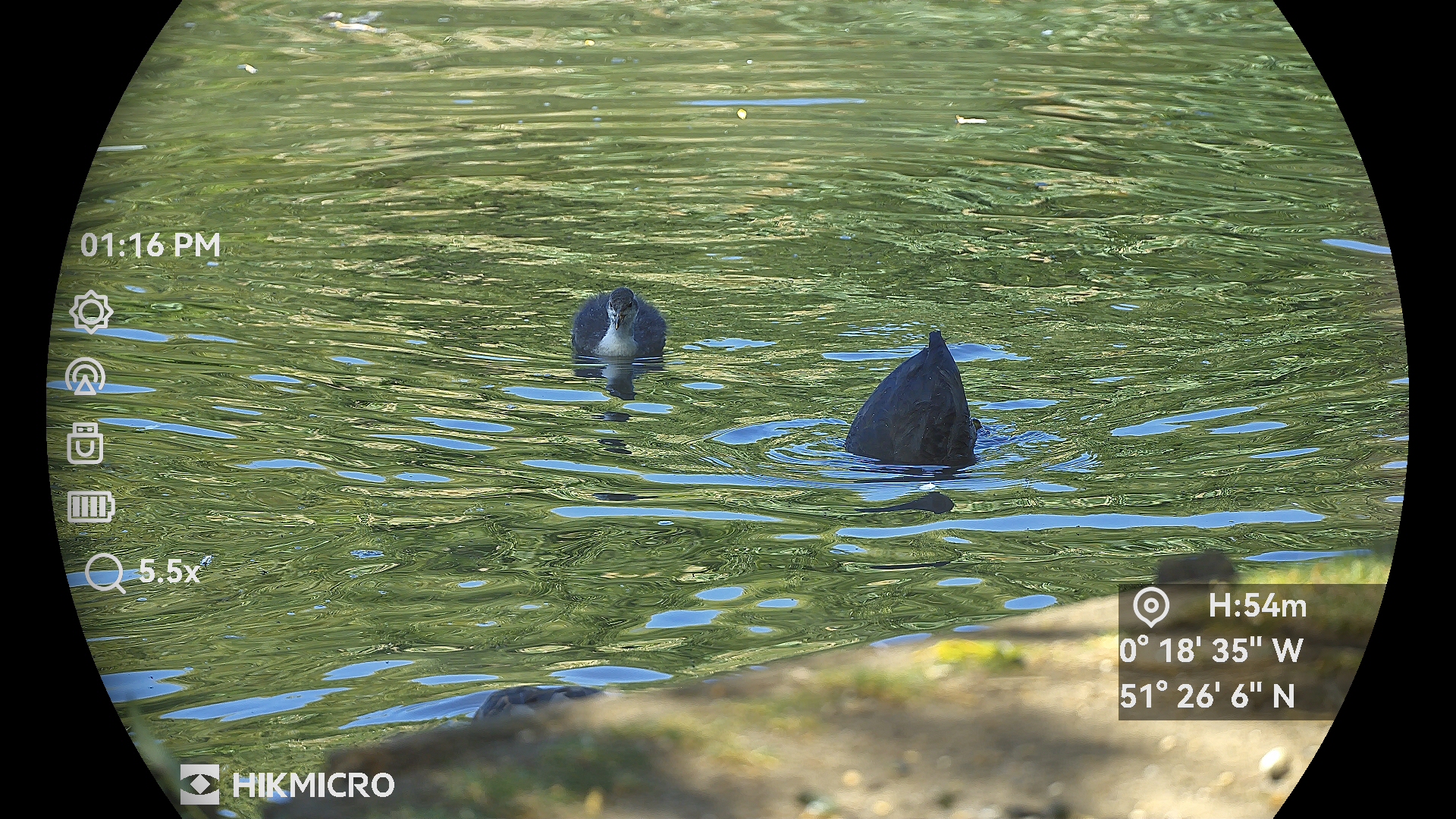
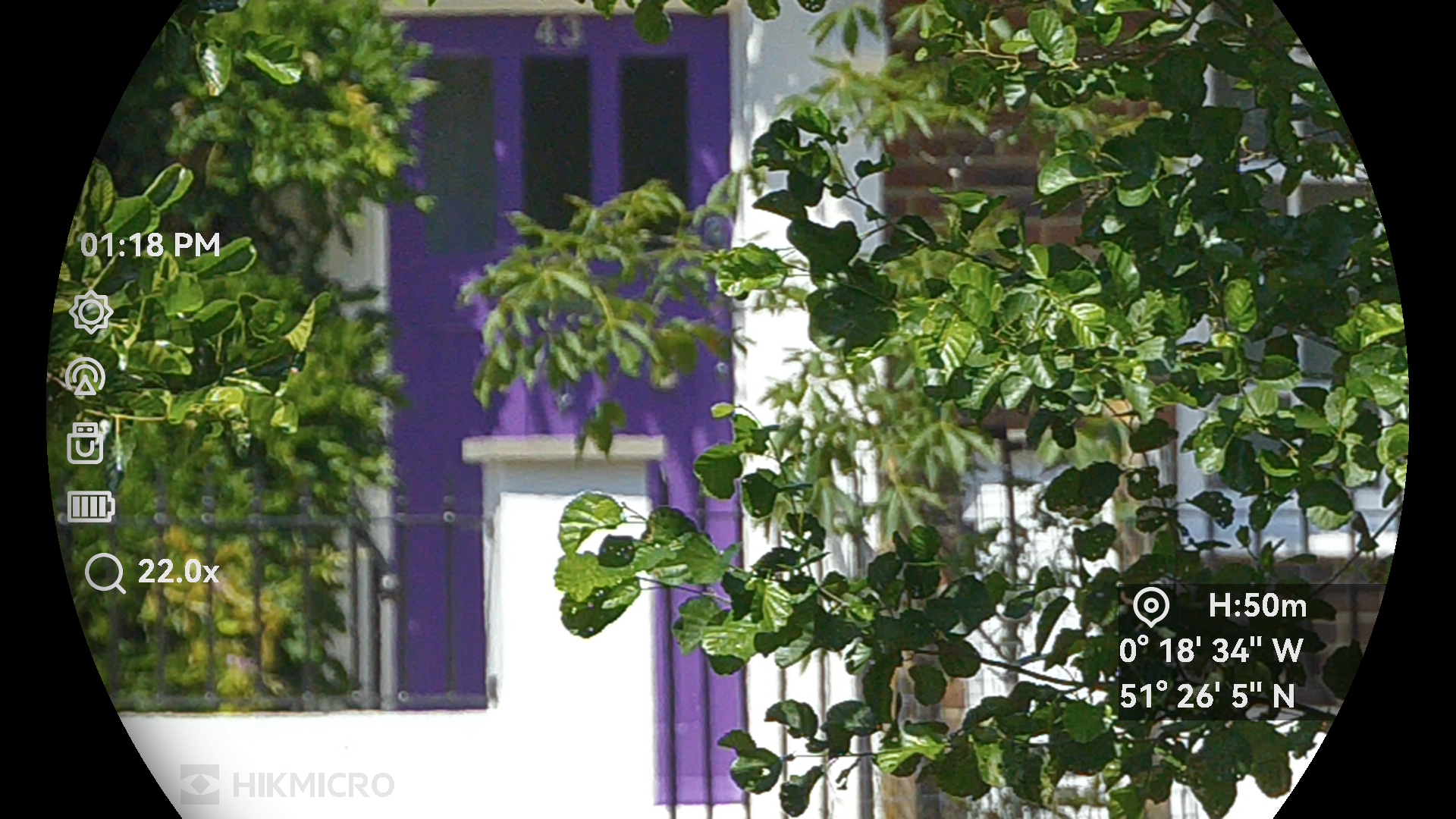
In use, as this is a digital device, it did feel like I was looking at a high-resolution video image – in fact, a 0.49-inch OLED display with a 1920x1080 resolution – through the eyepieces, without quite the degree of clarity I’d get from high end binocular glass from Zeiss or Swarovski.
Inevitably, image judder is more pronounced when hand-holding at higher magnifications, too. But without attaching a travel tripod, this is unavoidable. I found sticking to 5.5x magnification when hand holding the device seemed to be the sweet spot for a wobble-free image with maximum clarity, especially if it’s also one you want to take a photo of and commit to the internal memory.
To be picky, when used in daylight conditions, I’d have liked a brighter and sharper view through the eyepieces than what is provided. I sometimes found it hard to tell whether the image was as sharply focused as I could get it.
In terms of operation and usability, it doesn’t seem like a great idea either that the power on/off button is adjacent to the image capture button. This meant that with eyes pressed against the eyepieces and fingers feeling for the controls, I sometimes accidentally pressed down on the power button when I was attempting to take a photo. Also, on a handful of occasions when powering up, I was met with a completely white live screen via the eyepieces, free of any information. Something that I could only rectify by the failsafe of removing and reinstalling the batteries.
Still, with everything up and running, the advantage of using the HikMicro Habrok 4K device at night is as clear as subjects’ heat signatures in the dark. Once I’d identified and zeroed in on them, it was then possible to switch to optical mode and capture a better-quality nighttime image, albeit in monochrome.
That said, whether we’re talking day or night capture, I won’t feel compelled to hang any of the pictures I’ve taken with this device; they’re best viewed as being for reference/identification purposes only. While at night reasonably sharp monochrome images are achievable via the optical unit in contrast to the fuzzy captures via the thermal camera, it’s hit and miss in the dark without a tripod. That said, when it comes to daytime observation, colours are vivid and realistic.
Judged as a device used to make a record of something, rather than to construct a pretty image, has me viewing the HikMicro Habrok 4K HE25L more favourably.
HikMicro Habrok 4K HE25L: Verdict
We live in a 24-hour society, so why not have a binocular/image capture device that can similarly function around the clock?
Because it offers a multitude of functions, I found it takes a period of familiarization before the HikMicro Habrok 4K HE25L can be used to its fullest extent. However, as my confidence grew regarding nighttime observation and image capture and navigating the buttons and selections in the pitch dark, I started to have fun using it. I can really see the advantage for those who want to track and observe wildlife at all hours, and in a variety of ways, without paying a king’s ransom.
It’s not perfect: I found peering through the eyepieces while my fingers felt blindly for the buttons needed to adjust settings on the fly a bit hit and miss. But such awkwardness is not unique to this model or manufacturer. Neither is the fact that thermal images or those highlighting hotspots on an animal are fuzzier and more indistinct than monochrome or colour images; that’s literally the nature of the beast.
As a single device for around-the-clock observation and tracking, the convenience and price of the HikMicro Habrok 4K HE25L means it’s well worth considering alongside a night vision monocular or goggles.
Design ★★★★☆ | The HikMicro Habrok 4K HE25L looks like a conventional binocular but doesn't handle like one, requiring some familiarization. Its controls are closely sized and feature dual uses, making operation less intuitive. All menus and information are displayed within the eyepiece, so users must feel for the correct buttons. Still, if Batman were to carry a day/night binocular, this chunky, sleek model would fit perfectly on his utility belt. |
Performance ★★★★☆ | While brightness, sharpness and contrast can be manually adjusted to suit, to be picky even when upping these levels to nine, the image through the eyepiece is neither as bright, nor as sharp as I’d hope in daylight. That said, for night vision and observation and tracking of subjects in the dark via heat signature and hotspots alone, wildlife watchers may consider this money well spent… |
Value ★★★★☆ | Which leads me to conclude that this Chinese made device is priced fairly given the variety of uses and the general level of specification on offer. |
✅ Buy it
- If you’re looking for a device capable of day and night observation, as well as the ability to pick out partially obscured subjects via their heat signature alone
❌ Don’t buy it
- You’re mainly seeking a pair of binoculars for daytime use, whereby there are sharper, less expensive, and less bulky examples available.
Alternatives
Our example aside, there are more than a handful of recommended night vision / thermal imaging binoculars, monoculars, and goggles for those who want to see in the dark. If it’s a camera binocular for nighttime observation without breaking the bank, you’re after, a recent contender at an almost pocket money price is the Akaso Seemor 200. The downside, though, is no onboard storage and flat-looking colour images. A step up is the Bushnell Equinox Z2 6x50 night vision monocular. This boasts a generous objective lens size and the ability to commit 8MP stills or 1080P video to a removable microSD card, even if we wished, as here, operation was less clunky and viewing sharper. It is, however, pretty good for tracking at night and retails for a lot less than the HikMicro if you don’t mind viewing via a single eyepiece.
If, however, you don’t need a binocular that can see in the dark or capture images with it, there are plentiful alternative options, including battery-powered, gyro sensor-equipped image-stabilized binoculars. Worth checking out here are the Kenko VC Smart Cellarto 10x30 WP binocular, the Nikon Stabilized 10x25 and 12x25 models, plus the higher-end Fujifilm Techno-Stabi (stabilized) TS 16x28 WP, which, as its suffix indicates, is waterproof. Alternatively, if it’s premium you want, there’s the beefy Canon 12x36 IS III. Flick a switch or press a button on each, and that swan, which without ‘IS’ appeared to be at a disco, so pronounced was the image judder, now suddenly glides across the water like a professional ice skater.
If it’s ‘just’ a very high quality yet compact and portable binocular for scrutinizing the finer details of birds and wildlife you’re after, then the Swarovski CL Companion 10x30 would be an excellent place to start your investigation, its asking price slightly less expensive than the all-encompassing HikMicro example here. Bird watchers on a tighter budget should examine the Celestron range. Its Trailseeker 8x42 is ideal both for birdwatching and general outdoor use and comes at an almost pocket money price when compared to the above.
Gavin has over 30 years’ experience of writing about photography and television. He is currently the editor of British Photographic Industry News, and previously served as editor of Which Digital Camera and deputy editor of Total Digital Photography.
He has also written for a wide range of publications including T3, BBC Focus, Empire, NME, Radio Times, MacWorld, Computer Active, What Digital Camera and the Rough Guide books.
With his wealth of knowledge, Gavin is well placed to recognize great camera deals and recommend the best products in Digital Camera World’s buying guides. He also writes on a number of specialist subjects including binoculars and monoculars, spotting scopes, microscopes, trail cameras, action cameras, body cameras, filters and cameras straps.
You must confirm your public display name before commenting
Please logout and then login again, you will then be prompted to enter your display name.
